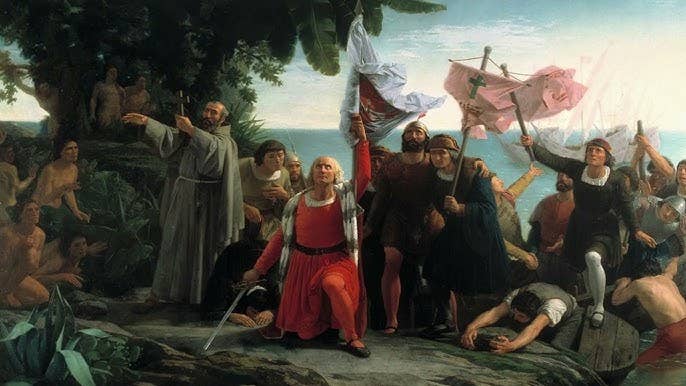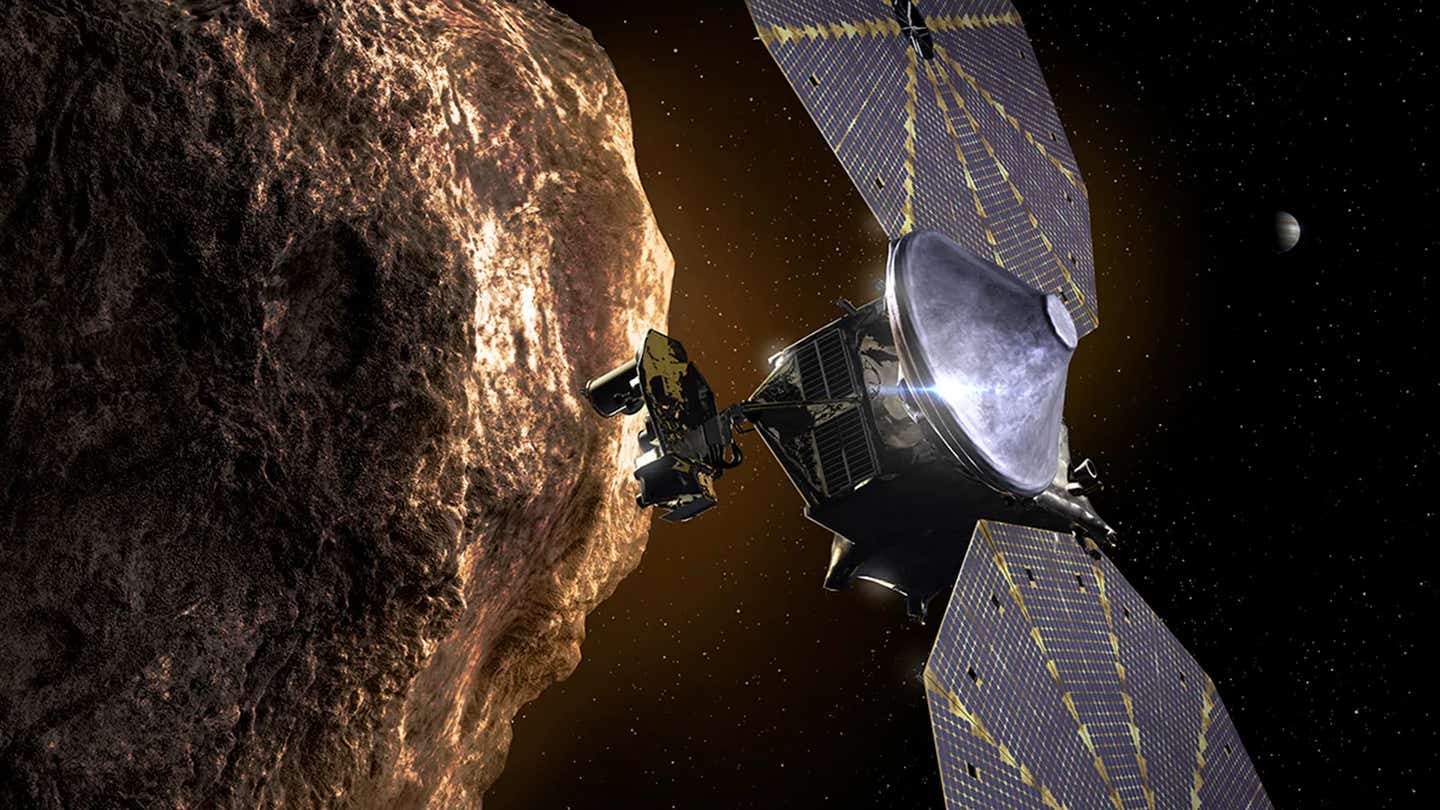New evidence reveals America’s discovery long before Columbus
Sailors from the same region as Christopher Columbus may have known about North America more than a century before his 1492 voyage.

New analysis of ancient writings suggests that sailors from the Italian hometown of Christopher Columbus knew of America 150 years before its renowned ‘discovery’. (CREDIT: CC BY-SA 4.0)
A newly analyzed medieval manuscript suggests that sailors from the same region as Christopher Columbus may have known about North America more than a century before his 1492 voyage. The revelation stems from a little-known text written in the 14th century that challenges long-held views about when Europeans first learned of lands across the Atlantic.
The document, Cronica universalis, was written around 1345 by a Milanese friar named Galvaneus Flamma. Professor Paolo Chiesa, a scholar of Medieval Latin literature, recently brought it to light through a detailed study. “The reference is astonishing,” Chiesa said, noting that the text appears to describe a part of the North American continent.
In the chronicle, Flamma refers to a distant land called “Marckalada,” a name scholars have connected to “Markland,” which appears in Icelandic sagas. This term has long been associated with parts of the Atlantic coast such as Newfoundland and Labrador. Chiesa’s interpretation positions this as the earliest Mediterranean mention of the Americas.
Trade and travel likely played a role in spreading the story. According to Chiesa, Genoese sailors—well-traveled and deeply involved in maritime commerce—may have picked up tales of this distant land from their northern counterparts. These rumors could have been passed through docks and taverns, woven into the everyday conversations of seafarers.
The findings, published in Terrae Incognitae, offer more than just an intriguing footnote. They contribute to ongoing debates over what Columbus actually hoped to find. Was his voyage purely exploratory, or was it guided by fragments of preexisting knowledge? This rediscovered manuscript adds weight to the idea that the Americas weren’t entirely unknown.
These questions are especially relevant today. Each year, Columbus Day draws new scrutiny, with many cities and states instead observing Indigenous Peoples’ Day. Statues of Columbus have been toppled or defaced, reflecting deeper reassessments of European colonization and its aftermath.
Though the Cronica universalis offers only glimpses, Chiesa believes the fragmentary references are significant. They suggest that Europe’s awareness of the Western lands may have been more widespread—and far earlier—than most history books admit.
Related Stories
He explains that Genoa, the city where Columbus was born, was a hub of maritime trade, serving as a gateway for news and stories from far-off lands, including Greenland and other northern territories.
Galvaneus Flamma, the author of the document, was well-connected to the ruling family in Milan and wrote extensively on historical subjects. His writings provide a unique perspective on Milanese history and beyond.
The document itself was unfinished, but it attempted to chronicle the history of the world from creation onward. In one passage, Galvaneus makes reference to rumors of lands to the northwest, believed to be for the potential of commercial gain.
He describes these lands as being “rich in trees” and inhabited by animals, characteristics not unlike those of the Markland mentioned in the Grœnlendinga Saga, a medieval Icelandic text. Galvaneus’s detailed description of Greenland, coupled with his mention of Marckalada, reflects the knowledge circulating among Genoese sailors at the time.
“What makes the passage exceptional is its geographical provenance: not the Nordic area, as in the case of the other mentions, but northern Italy,” Chiesa says.
He adds that while many of the rumors Galvaneus recorded were too vague to be included in maps or scholarly texts, this discovery demonstrates how information from Nordic sources may have reached Italy long before Columbus set sail.
The mention of Marckalada suggests that tales of this distant land traveled from the northern harbors, carried by Scottish, British, Danish, and Norwegian sailors trading with Genoese merchants.
Chiesa emphasizes that Cronica universalis is a reliable source, as Galvaneus is careful to note when he is recounting oral stories, often supporting his claims with elements from both legendary and factual accounts. This level of detail, Chiesa believes, lends credibility to the friar’s account of the Genoese sailors having heard about North America from their northern trading partners.
Though there is no evidence that Italian sailors themselves reached these northern lands, the Genoese were well positioned to gather news and goods from northern Europe and transport them to the Mediterranean.
Chiesa also highlights the advanced geographical knowledge of the north possessed by Genoese and Catalan sailors, as evidenced by their detailed nautical charts from the fourteenth century.
“It has long been noticed that the fourteenth-century portolan charts drawn in Genoa and in Catalonia offer a more advanced geographical representation of the north,” Chiesa explains, indicating that this knowledge likely came from direct contact with northern European traders.
Although the exact extent of Genoese sailors’ understanding of the American continent remains uncertain, the discovery of Cronica universalis opens the door to new interpretations of European exploration in the Middle Ages. It suggests that Italian merchants and sailors may have been aware of lands beyond Greenland long before Columbus embarked on his voyage.
As of now, Cronica universalis remains unpublished, but there are plans for a future edition as part of a scholarly program at the University of Milan.
This forthcoming publication will likely spur further discussion on the global exchanges of knowledge that took place in the centuries leading up to the age of exploration.
5 key facts about the Cronica Universalis:
Authorship and Period: The Cronica Universalis was written by Giovanni da Carignano, a Genoese cleric and cartographer, in the early 14th century. It offers a historical perspective on global events and geography during the medieval period.
Geographical Knowledge: The text reflects Giovanni's knowledge of geography, highlighting early European understanding of distant lands, including Africa, Asia, and even hints of lands across the Atlantic.
Mentions of the New World: It is notable for its early references to regions west of Greenland, possibly alluding to Norse exploration of North America. This predates Columbus's voyages by more than a century.
Integration of Maps and Text: Giovanni combined written accounts with cartographic insights, creating a blend of historical narrative and geographical representation. This approach was advanced for his time, showing an effort to document the known world comprehensively.
Historical Significance: The Cronica Universalis provides valuable insights into medieval European worldviews and early knowledge of lands beyond Europe. It is considered a precursor to later explorations and expansions of global awareness.
Note: Materials provided above by The Brighter Side of News. Content may be edited for style and length.
Like these kind of feel good stories? Get The Brighter Side of News' newsletter.
Joseph Shavit
Head Science News Writer | Communicating Innovation & Discovery
Based in Los Angeles, Joseph Shavit is an accomplished science journalist, head science news writer and co-founder at The Brighter Side of News, where he translates cutting-edge discoveries into compelling stories for a broad audience. With a strong background spanning science, business, product management, media leadership, and entrepreneurship, Joseph brings a unique perspective to science communication. His expertise allows him to uncover the intersection of technological advancements and market potential, shedding light on how groundbreaking research evolves into transformative products and industries.



